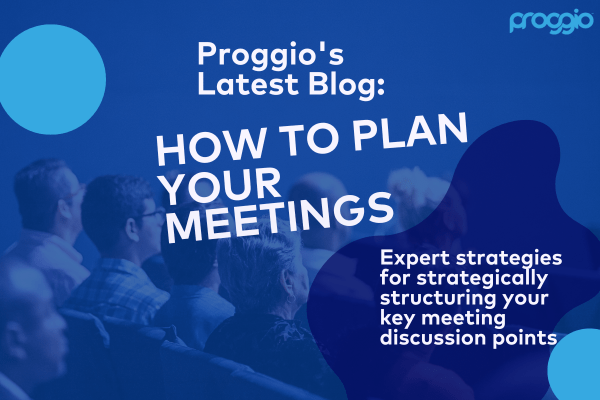How to Plan Your PM Meeting Talking Points & Goals

We’ve all been in that meeting with The Rambler. You know, that person who starts to tell a story or tries to make a point only to finish it — if they ever even get that far — 10 or 15 minutes later. So by the time you actually get to the business at hand, the meeting is halfway over and you’re just thinking about what you might order for lunch.
That’s why meeting goals and talking points are so important. They help keep The Rambler on track and make it clear to everyone what’s on the agenda before you even get started.
So, naturally, that’s the phase in our 10-step guide: How to Plan a Meeting People Actually Want to Attend.
We’ve already covered Step #1: Decide if you really need the meeting. And now it’s time for Step #2: Plot your talking points and goals.
Here are some tips and best practices to do just that:
- Create a team meeting agenda. Use this agenda to clearly outline your meeting’s objective, talking points by priority, estimated time for each talking point, and participants needed to meet your objective.
- Use open-ended questions. List your talking points as questions instead of statements — or worse — phrases. Make it easy for people to actively join in the discussion and share their ideas.
- Cut the fat. Don’t waste time on recaps, status updates, or anything that could’ve been an email or Slack ping. Stick to deep, collaborative work like brainstorming and strategizing.
- Ask for input. If the meeting is collaborative, setting your goals can be, too. Ask participants what they hope to accomplish with this meeting and if they have any pressing matters or unique insights to discuss.
Also, here’s an expert tip from leadership consultant Roger Schwarz: “Make the first topic ‘review and modify agenda as needed.’ I once had a meeting scheduled with a senior leadership team. The CEO stated that he had just told the board of directors that he planned to resign and that we probably needed to significantly change the agenda. Not all agenda modifications are this dramatic, but by checking at the beginning of the meeting, you increase the chance that the team will use its meeting time most effectively.”
And, as Proggio CEO Yaniv Shor recommends: “Block time on the meeting agenda specifically for collaboration on issues. By creating the space for discussion within the allotted time frame, you’re more likely to stay on task with the agenda and avoid going too far down a specific rabbit hole, which then eats up the entire meeting block and leaves topics or issues that don’t make the cut unaddressed.”
To recap, here’s our quick, actionable tip for Step #2: Always prepare and distribute your agenda and talking points ahead of time. This way, you and your attendees know what to expect from the meeting and you can hold each other accountable to stay on task.
Ready to streamline your project management operation and make meetings less of a headache for your team? Book a demo with Proggio.